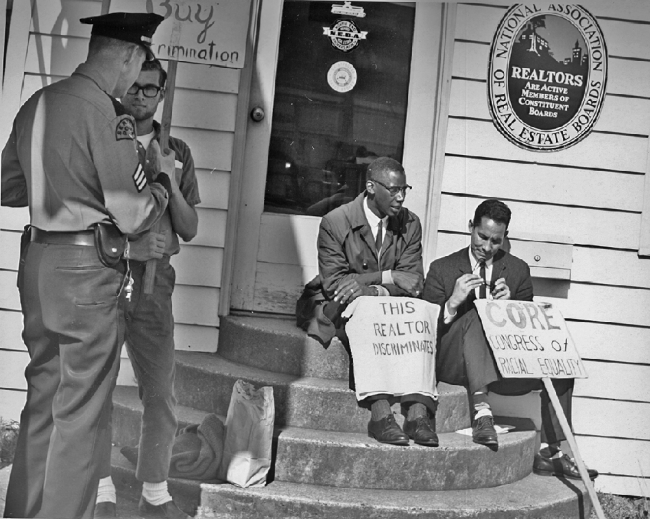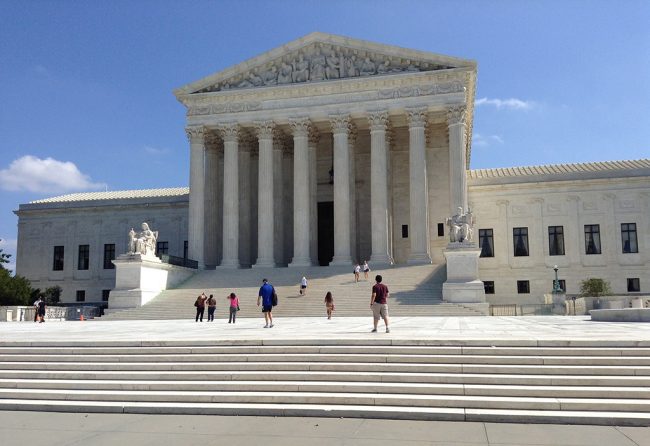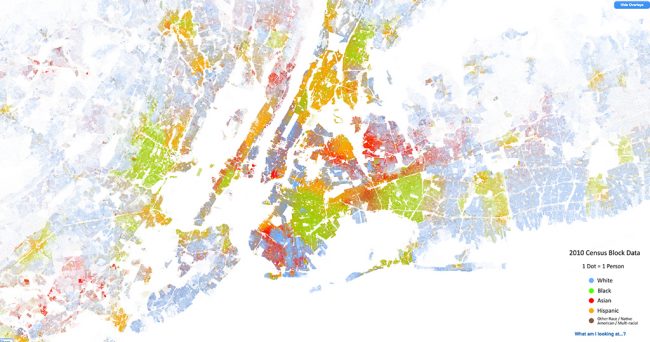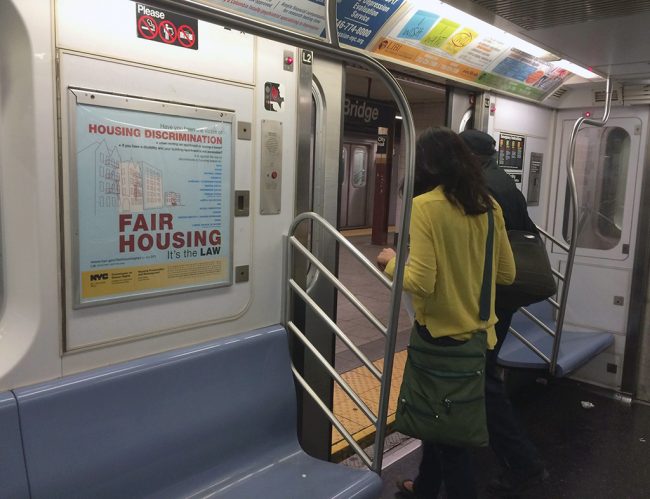
We are celebrating 15 years — and counting — of stories that are deeply researched and deeply felt, that build a historical record of what the city has been.
We are celebrating 15 years — and counting — of stories that are deeply researched and deeply felt, that build a historical record of what the city has been.

Fair Housing protest, 1964 | Photo via Seattle Municipal Archives
The federal Fair Housing Act, the final piece of the landmark Civil Rights Act, was born of violence. One day after Martin Luther King, Jr.’s assassination on April 4, 1968, and during a period of intense civil unrest, President Lyndon B. Johnson urged Congress to take up the legislation, which had languished in Congress following years of advocacy and compromise. One week later, the Act was signed into law, making it unlawful “to refuse to sell or rent … a dwelling to any person because of race, color, religion, sex, familial status, or national origin.”
Sometime in the next ten days, the Supreme Court is going to issue a ruling that could render a pivotal enforcement tool in cases of housing discrimination — and thus equal access to housing guaranteed by the Fair Housing Act — invalid. The case in question, Texas Department of Housing and Community Affairs v. Inclusive Communities Project, concerns the formula Texas used to distribute Low-Income Housing Tax Credits, one of the primary mechanisms for funding the construction of new affordable housing nationwide. The nonprofit Inclusive Communities Project demonstrated that nearly all tax credit-funded housing in Dallas was built in the region’s heavily black and Latino neighborhoods. While finding no intent to discriminate, a federal judge ruled that the practice promoted housing segregation and was therefore a violation of the Fair Housing Act.
That finding falls under disparate impact theory, in which a practice is found to have discriminatory effects regardless of intent. The key issue before the Supreme Court, then, is whether the Fair Housing Act only prohibits intentional discrimination or whether it also covers more broad disparate-impact claims, in which seemingly neutral practices nonetheless discriminate against a person based on race, gender, or another protected class. Intentional racism is difficult to prove, as it requires a “smoking gun,” like a recorded conversation or e-mail, and generally only addresses an individual’s behavior rather than systemic inequality.

The Supreme Court Building in Washington, D.C. | Photo via WEBN-TV
The way this discrimination plays out in the actual making of the city can go unnoticed at first. The shape and make-up of neighborhoods is often attributed to individual decisions and market forces rather than seemingly mundane policy tools like zoning codes or tax credits. The Texas case addresses affordable housing site selection, which was the same issue at stake in the landmark $62.5 million Westchester County residential desegregation settlement. Westchester was accused of ignoring fair housing mandates by using federal subsidies to develop affordable housing in only certain towns, while exclusionary zoning policies — such as lot size and density restrictions that prevented multi-family housing — effectively kept African American populations of 31 municipalities from rising above 3 percent. In another local example, the Fair Housing Justice Center in 2010 brought a pair of lawsuits against two private communities in the Bronx that required prospective homebuyers to produce three letters of recommendation from current residents, who are overwhelmingly white. A district court judge sided with FHJC’s claims of both intentional discrimination and disparate impact against blacks. Yet residents’ sentiments were summed up nicely by the New York Times headline, “No Bias Here, Locals Say, Just Very Few Black People“ — the implication being that racially homogenous neighborhoods are the result of nothing other than personal choice.
The Roberts Court has been eager to take up the issue of disparate impact, to the dismay of housing advocates. This is the third lawsuit based on a disparate-impact claim to make its way to the Supreme Court in the last four years, although in the first two — Magner v. Gallagher and Mount Holly v. Mount Holly Gardens Citizens in Action — the parties settled before oral arguments began. These settlements were sought by advocates fearful that the conservative court would interpret the law to cover only intentional discrimination, a justified fear considering the current court’s pattern of rescinding key achievements of the Civil Rights movement (including the 2013 Shelby v. Holder decision that rolled back federal oversight of election proceedings in jurisdictions with histories of racial discrimination in voting).
Many believe this case should never have made it to the highest court. Not only has every appellate court that has heard similar arguments (eleven of them) ruled in favor of the disparate impact reading, but the federal Department of Housing and Urban Development (HUD) issued a federal rule in 2013 covering disparate impact cause of action under the Fair Housing Act. Finally, the Texas Department of Housing and Community Affairs, the defendant in the case, has already reformed the way it allocates tax credits to no longer steer them toward neighborhoods with already high concentrations of minority residents.

Screenshot from the Racial Dot Map showing racial segregation in the New York Metropolitan Region
What’s at stake is the ability to challenge the pervasive discrimination that courses quietly through American housing policy, as overt racism (manifested in practices like racial covenants and redlining) has been replaced by more subtly racist patterns deeply embedded in American systems of land use and finance. The amicus brief filed by Howard University School of Law’s Housing Clinic in the current case clearly states the consequences: “Racially isolated and segregated communities have severely limited access to quality education, economic opportunities, clean environments, medical treatment, and healthy foods.” The residential patterns and practices established more than a century ago still determine where and how we live, to disastrous effect, as outlined in Richard Rothstein’s The Making of Ferguson: “The federal government’s support for residential segregation in the mid-20th century is largely responsible for the fact that while the median family income of African Americans is now about 60 percent of whites’ income, the median household wealth of African Americans is only about 5 percent of whites’ wealth.”
There’s no question as to whether discrimination still exists in the housing market: a 2012 HUD report, prepared by the nonpartisan Urban Institute, found “minorities still face significant barriers to housing search, even when they are well-qualified as renters or homebuyers.” Yet like most modern-day forms of prejudice — whether in hiring decisions or New York City’s stop-and-frisk policing — housing discrimination is not the result of one racist person’s actions, but systems built on entrenched racist behaviors and practices, in which intention is irrelevant. Discriminatory effects linger after generations of official housing policy, backed by market practices and social norms, that isolated and denied opportunities to non-whites: “Residential segregation is the glue that holds the whole system of racial oppression together,” stated Douglas Massey, an expert in the effects of residential segregation.
While awaiting the court’s decision in the Texas case, the executive branch is finally taking action to enforce the integration mandate in the Fair Housing Act. This summer, the Obama administration will issue Affirmatively Further Fair Housing guidelines. The 1968 Fair Housing Act not only declared housing discrimination illegal, but ordered that municipalities actively de-segregate their neighborhoods. Yet how they were to “affirmatively further” fair housing was left undefined, and therefore toothless — jurisdictions effectively practice a form of self-policing with few or no repercussions for violating the law. After more than four decades, the AFFH rule will for the first time provide assessment criteria and data for municipalities to chart their compliance with the goal to “foster more inclusive communities.” (While these guidelines offer a standardized metric for evaluation, whether HUD will enforce violations by withholding important grant dollars remains to be seen.)

A new fair housing subway ad campaign by the NYC Commission on Human Rights | Photo via NYC CHR
The increased federal regulation, through the AFFH rule, coincides with a local push to reinvigorate the enfeebled New York City Commission on Human Rights. Last November, Mayor Bill de Blasio fired the Commission’s chair after Public Advocate Letitia James sent the mayor a letter criticizing the “moribund agency culture that results in lax enforcement” and replaced her with Carmelyn Malalis. In April, de Blasio signed legislation to strengthen the Commission, requiring a practice called “paired testing” that uses undercover applicants to root out employment and tenant discrimination. “Landlords who discriminate … violate our basic sense of right and wrong, make our housing crisis worse, segregate our city, and break NYC’s Human Rights Law,” said Council Member Brad Lander at the bill signing. “Unfortunately, in recent years, we’ve done almost nothing about it. This law will help us get back on track.” The mayor has also proposed a significant increase in the Commission’s budget, which, at $4.5 million in 2015, was about half of its 1991 allocation.
All of the repercussions of the Supreme Court ruling in favor of Texas are not yet clear. Cities and states have their own fair housing regulations that don’t always mirror the federal law (and are enforced to varying degrees). But the outcome will have far-reaching implications, and not merely because housing access and choice affect every other one of our opportunities. Banks, for example, are eagerly awaiting the decision, as disparate impact forms the basis of charges levied against financial institutions that engaged in predatory lending practices. The largest fair housing settlement in history, in 2011, required Countrywide Financial to pay $335 million for allegations of steering black and Hispanic borrowers toward subprime mortgages. The US Chamber of Commerce, American Bankers Association, and other industry groups have filed amicus briefs supporting Texas’s intent to limit liability to only intentional discrimination. The ruling “may greatly reduce liability for unfair mortgage financing practices nationwide and limit the ability for the government to combat predatory lending,” wrote law professor Jennifer Taub.
In signing the Fair Housing Act into law, President Johnson remarked: “We all know that the roots of injustice run deep. … We have come some of the way, not near all of it. There is much yet to do.” Yet despite signs to the contrary, the court could decide that we have now made it all of the way and overturn perhaps the only effective tool for combatting the consequences of our brutal legacy of housing discrimination.
The views expressed here are those of the authors only and do not reflect the position of The Architectural League of New York.